Abstract
Nigeria has become important in the world as a supplier of oil and natural gas because of reducing crude oil reserves. The key forces shaping Nigeria Natural gas industry are global warming, improved associated gas recovery technologies, economic forces, and international energy security. This project aimed at developing a master plan for the utilization of natural gas produced in Nigeria. The methodology employed included collection of data by reviewing data from several academic and institutional sources. The process used was clarification of the problem, development of research questions based on the objectives, a literature search, undertaking of a PEST-Analysis, and finally development of an outline for a master plan for natural gas utilization.
The key findings from the literature search were that a master plan requires a good vision, clear objectives, achievable short-term and long-term goals, and an evaluation mechanism. It must also involve the key stakeholders. Other findings include the fact that the interest in Nigerian gas emanates from the strategic interests of foreign nations. From the PEST-Analysis, it was clear that Nigeria has a very challenging internal environment characterized by political tension, lack of social cohesion, poor economic planning plagued by mismanagement and corruption, and an overreliance on foreign workers and technologies.
The recommendations forwarded include the use of Nigerian gas for the alleviation of the countries shortfall in internal energy supply and the short-term use of foreign technologies while building local capacity.
Introduction
Due to the increasing uncertainty over energy resources all over the world, natural gas has become an increasingly significant source of energy. Its proper management and utilization presents a number of benefits to producer countries. Nigeria is a significant producer of petroleum. It exports its crude to many destinations with the United States being the greatest importer of crude from Nigeria as shown in Figure 1.
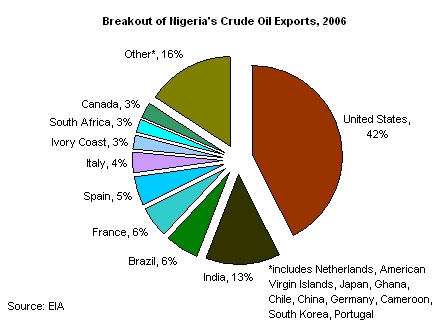
Nigeria relies heavily on crude exports to run its economy (Ariweriokuma, 2008). The petroleum sector contributes over 80% to the economic activities of the country (Mwalimu, 2005). In the past, Nigeria flare up the natural gas that surfaced during crude mining, referred to as associated gas. This underscores the need to develop a natural gas utilization master plan for Nigeria, which stems from a number of factors which if addressed promises many benefits for Nigeria, and for other countries. The context within which the development of this master plan lies includes global warming, improved energy conversion technologies, potential wide-ranging economic benefits from the development of natural gas resources, and global energy security. This paper investigates the influence of these factors and examines the requirements for the successful development and implementation of a natural gas master plan for Nigeria.
Background
Occurrence and Processing of Natural Gas
There is a significant difference between the natural gas sold to domestic consumers and the gas comes off gas wells. In the intervening parts of its processing, it undergoes some changes in its chemical composition mainly to rid it of the other chemical components that come with it during extraction. At its naturally occurring state, natural gas is a mixture of many substances including hydrocarbons and other compounds. The hydrocarbons present in natural gas include ethane (C2H6), propane (C3H8), and butane (C4H10). They also contain pentanes (C5H12). Other compounds present in natural gas during extraction include sulfur occurring as Hydrogen Sulfide (H2S), Carbon Dioxide CO2 Helium (HE), Nitrogen (N), and other trace elements. The general name for these compounds is Natural Gas Liquids and they form very important by products of natural gas extraction that are useful in chemical industries.
The extraction of natural gas takes place in any one of three types of wells depending on the nature of the gas at the site. These wells are oil wells, gas wells, and condensate wells. Natural gas extracted from oil wells is the type known as associated gas because it comes out with oil during crude oil extraction. Associated gas takes on two forms. In the first case, it comes out separate from the oil and its recovery is by a simple process in a tank. This type of gas, called free gas, settles above the crude. In the second case, the gas comes out dissolved in the crude and requires a chemical process to separate it from the crude oil.
Apart from associated gas, the two other well types produce non-associated gas. The gas occurs as a separate entity from crude oil and its extraction specifically aims at its recovery. After extraction, natural gas goes through various stages of purification to make it useable to the final consumer. The purification process includes the removal of oil and other condensates, removal of water and water vapor, separation of the Natural Gas Liquids, and desulfurization and de-carbonation. After these processes, the gas is ready for transportation and marketing.
The Niger Delta
The Niger delta is home to about ninety percent of Nigeria’s oil and mineral wealth. The region has become the regional flashpoint for oil related crime and insurgence. The movement for the emancipation of the Niger Delta is a ragtag militia that seeks to secede from the greater Nigeria ostensibly to enjoy more control of the oil resources that the region produces. This militia group attacked the Bonga field in 2008 causing the halting of natural gas production. Nigeria’s future as a LNG exporting country lies in the balance since the Niger holds significant amounts of its reserves.
The government has resorted to repressive ways of dealing with the conflict there, which in turn has fuelled the growth of the rebel armies. The militia uses underhand tactics to get revenue from the oil such as kidnapping of the workers in the industry and recovering ransom. In addition to the militias in the region, there are a number of incidents of civilian disobedience caused by the disenfranchisement of the people of the Niger Delta. They feel that they withstand the worst consequences from the mining activities but do not benefit as much as they should. This leads to vandalism and destruction of oil and gas pipelines, prolonged protests, crime.
Despite this grim picture, the government still has options in dealing with the Niger delta crisis. The region will have a reduced propensity to violence if the education standards go up. This is one of the longer-term solutions to the crisis. It is telling that despite the fact that the region is home to a vast quantity of Nigeria’s oil wealth, its poverty incidence is lower than the national average. Secondly, the government must adopt dialogue as a means of resolving the conflicts in the region because repression only galvanizes the resolve to break away from the rest of the country. It justifies the existence of militia such as the movement for the emancipation of the Niger delta. Thirdly, the need for fair land compensation through well-arbitrated processes, though tedious, will insure the long-term stability of the oil industry. This will ensure that as
The Need for a Natural Gas Master Plan
Nigeria holds an influential position in the complex international energy supply chain occasioned by globalization, which has literally amalgamated different cultures into a single market (Dalic, 2007). This situation, coupled with the country’s internal circumstances, is responsible for the pressure on Nigeria to play a more significant role in the international energy supply complex. As already mentioned, there are four influential forces driving Nigeria’s need to develop and implement a natural gas utilization master plan.
Global Warming
The first among these forces is global warming. Environmental conservation is becoming one of the most influential forces driving business across the world (Itsueli, 2009). There is a strong push from various international players for governments, organizations, and businesses to take into account environmental impacts of their activities. Indeed, many countries have an environmental standards enforcement agency. In Nigeria, the Federal Environmental Protection Agency (FEPA) takes care of issues relating to environmental conservation (Mba, 2004). FEPA handles all environmental concerns in Nigeria including those emanating from the oil and gas industry (Emiri & Deinduomo, 2009).
In the past, Nigeria flared the natural gas that surfaced during crude mining (Onyeukwu, 2009). The quantities of natural gas flared increased steadily in the eighties and early nineties, and peaked in 1996 as shown in Table 1.
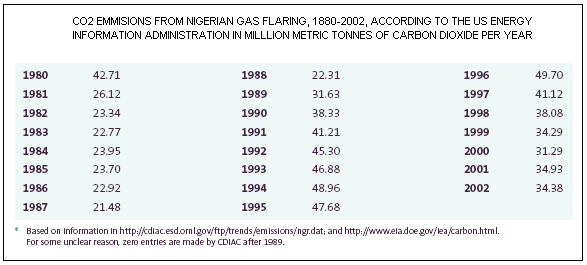
This led to significant environmental pollution because of the release of green house gases such as methane and carbon dioxide. These gases are responsible for the depletion of the ozone layer. This realization has led to the international requirement that all countries work towards bringing about a reduction in their emission levels. Therefore, the Nigerian petroleum industry currently operates in an environment where global warming is a serious concern. This concern contributes to the need for Nigeria to reconsider its handling of associated gas. Commercialization of associated gas will lead to reduced flaring, hence saving the environment (Umukoro, 2009). Nevertheless, these gases contribute much less to global warming compared to the contribution from combustion of other fossil fuels (Low, 2005).
Better Technologies
The Nigerian oil industry is almost one hundred years old. During this time, there has been a very big change in the technologies used in the oil industry. Initially, it was much more difficult to recover and utilize associated gas. However, over time, there is a huge improvement in technology, enabling the economical recovery of natural gas from the process. This means that the previous technological limitations to the process that Nigeria faced, no longer apply. With these advances, the recovery of natural gas during crude extraction is now a feasible endeavor from which Nigeria can benefit. However, the reliance on foreign technologies makes this process very expensive (Ekwekwe, 2011). According to the United States Department of Energy (DOE), a well dug using newer technologies in 2010 produces twice the gas compared to a similar well dug in 1985 (DOE, 1999). In combination with other methods, the drilling footprint in America is down by 70%. The newer technologies include 3D and 4D seismic imaging, which produces 3D images of the ground structure improving the location of holes, with ad additional dimension of time in the 4D technologies, which identifies changes in the ground over time (Natural Gas Supply Association, 2010). Another important technological advance is the Measurement While Drilling (MWD) technology. This allows for the measurement of drilling parameters while the drill bit is in motion reducing down type. The third technology is slim-hole drilling, which requires that the drill head does not exceed 6 inches (Natural Gas Supply Association, 2010). It reduces the time spent drilling a well and improves the efficiency of the drilling operation.
Economic Reasons
Nigeria is a growing economy with a very significant place in the Africa. It is the third largest economy in Africa built around the oil industry (Clickafrique, 2010). It is Africa’s leading oil producer after Libya (Graham, 2004). However, there are several problems that bedevil Nigeria, which are common to developing countries. Being the most populous country in Africa, Nigeria needs all the jobs it can create for its estimated 158 million citizens (UN Habitat, 2010). The country has one of the highest literacy levels in Africa estimated at 50%, with the figure rising up to 87% for youth between the ages of 15 to 24 (Packer & Aggio, 2010). This means that in addition to the jobs that the oil industry currently provides it is desirable for the country to create more jobs around the natural gas industry. The development of a master plan for the utilization of natural gas in Nigeria will provide the country with a new way of providing the citizens with much needed jobs. Recovery of natural gas also promises further economic growth for Nigeria as it earns more foreign exchange by selling its natural gas. It can also help alleviate local energy supply problems because Nigeria has a very stubborn energy supply problem for meeting its domestic needs.
Energy Security
In addition to the above, the world stands to benefit immensely from Nigeria’s natural gas if provided in the international market. The country is pivotal to global energy security because of its petroleum resources (Institute for Defence Studies and Analyses, 2009). Crude oil alone, being a non-renewable resource, is the source of much uncertainty for the whole world because many industries depend on it for industrial operations while there are many intervening factors determining its supply. There is a critical need to diversify energy options and natural gas is a very promising alternative. Nigeria ranks eighth among the countries with proven natural gas reserves as shown in Figure 2.
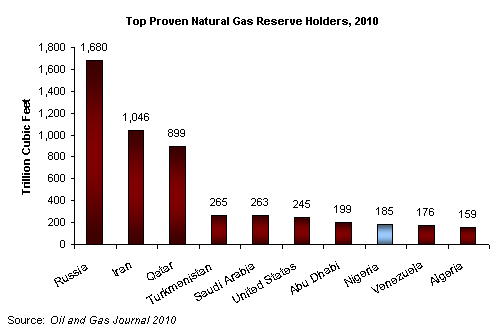
Nigeria’s oil and natural gas reserves are important not just for the country but for the international community. Nigeria has over two hundred and fifty oil and gas fields in service throughout the country. The country has proven oil reserves in the region of twenty seven billion barrels making it the seventh largest oil reserves holder in the world. Estimates for its proven natural gas reserves stand at one hundred and twenty four trillion cubic feet, which is equivalent to twenty one billion barrels of oil. This reserve accounts for a third of Africa’s natural gas reserve. Currently Nigeria produces two million barrels of oil per day making it the ninth largest oil producer in the world.
The two prominent gas fields in Nigeria are the Bonga field and the Akpo field. The Apko field lies off the coast of Port Harcourt. The operations of the field are under a conglomeration consisting of Total Nigeria, Sapetro, and the government owned Nigeria National Petroleum Corporation, China CNOOC Limited, and the Brazilian Petrobras. Bonga lies off the coast of the Niger Delta. It is 120 kilometers off the coast of Nigeria. The field has been producing natural gas since 2005. Both fields have as pipeline linking them to mainland natural gas production facilities where it is prepared for export. The oil extracted from the field goes straight into export vessels from the floating rigs located offshore.
While natural gas is also non-renewable, it eases pressure from crude oil reserves and in the process increases global energy security. This makes Nigerian natural gas not just a local asset, but also a global one (US Energy Information Administration, 2009).
Aims and Objectives
Based on the critical review of the issues that attend to the energy industry in Nigeria, this paper aims at developing an outline for a natural gas utilization master plan for Nigeria. It will seek to identify all the critical factors that will influence the process of development of this master plan and propose the best strategy for its development given the unique circumstances of the Nigerian system.
Aim
The aim of this paper is to develop the essential elements of a natural gas utilization master plan for Nigeria.
Objectives
To identify the critical elements of a master plan applicable to natural gas utilization in Nigeria, the status of development of the natural gas sector in Nigeria and an environmental scan guided by a PEST Analysis.
The development of a master plan requires an appreciation of what a master plan is. Through this objective, there will be a critical look at the elements constituting a master plan in the context of the energy sector.
A PEST-Analysis provides a suitable format for conducting an environmental analysis. It is particularly applicable for use in this case because there is need to understand the environment for the implementation of the master plan. It provides a comprehensive framework for the analysis of the environment.
To propose a suitable master plan for natural gas utilization in Nigeria
To identify the key issues around Nigeria that will influence the development and implementation of the master plan.
Methodology
Data Sources
Several data sources provided the information used for this project. The data came from a vast array of academic and institutional literature. The sources include books written by Nigerian and international scholars on various aspects of the Nigerian oil and gas industry, information from national agencies carrying statistics and analysis of the socioeconomic environment of Nigeria. Other books consulted carried information on elements of master planning. Additional sources included information from international organizations such as The United Nations (UN), The International Monetary Fund (IMF), Africa Development Bank (AfDB), The Organization for Economic Cooperation and Development (OECD), The African Union (AU), and The Commonwealth Secretariat. Some resources came from American institutions such as The United States Congress, the International Business Publications (Ibp US), The US Energy Information Administration (EIA), and the Institute of Defense Studies (IDS). Publications from institutions of higher learning came from The Harvard Business School (HBS) and the Oxford Business Group (OBG).
Methodology
The method used to meet the project objectives was a five-step process described below.
Clarification of the problem
In order to meet the demands of the project, there was a need to be clear about the problem in question. In this case, the problem under consideration was the development of a master plan for natural gas utilization in Nigeria. This means that the intended output for the project is a master plan for the Nigeria natural gas sector that deals with the issues peculiar to the Nigerian environment.
Development of research questions
The next step involved the identification of research questions that would help guide the literature review process. It is impossible to produce a credible plan unless there are correct questions to guide the process. The questions came from the objectives.
Questions from objective 1
- What is a master plan?
- What is the role of a master plan in development planning?
- What are the essential elements of a master plan?
- What elements of a master plan apply to the Nigerian natural gas sector?
These questions covered all the background aspects of the development of a master plan, which has some unique characteristics when compared to other plans. Their role was to ensure that the final master plan developed in the project meets the requirements for a master plan. They served to provide delineation for the work of developing the master plan by providing the limits and extents of a master plan.
- What is the political framework within which the energy sector in Nigeria lies?
- What is the nature of the Nigerian economy?
- What kind of social factors are at play in Nigeria of interest to the natural gas sector?
- At what level is Nigeria technologically and how can it use it to engage profitably in natural gas recovery?
The significance of each of these questions derived from the PEST-Analysis was to provide guidance for the exploration of the contextual issues around the natural gas sector in Nigeria. A PEST-Analysis provides the opportunity for planners to see the issues under consideration in context (Gregory, 2000). The key issue is to determine what is vital from what is only important because not all the forces present carry significant weight, and they may not all warrant critical consideration (Grant, 2005). It covers the issues that an institution cannot control internally.
- What is the status of development of the natural gas sector in Nigeria?
- What lessons can Nigeria learn from other countries that are exploiting natural gas?
- What benefits will Nigeria get from this exploitation?
- What are the significant bottlenecks to natural gas exploitation?
As part of the process of development of any plan, it is imperative to understand the intervening factors that may influence the plan. These influences normally stem from the current state of development. It is also good practice to examine similar experiences from other places for useful lessons in the preparation of the master plan. Other key issues include the anticipated benefits from the master plan. These benefits serve as the justification for the implementation of the plan.
Questions from objective 2
- Which is a fitting vision statement for the master plan?
- What is the scope of plan?
- What objectives should the Nigeria natural gas utilization master plan have?
- Who are the key stakeholders in this plan?
- What short term and long-term goals should the plan entail?
- How will the plan undergo evaluation?
These questions relate directly to the actual master plan. The basis for their inclusion is that they captured the particular aspects of a master plan. They actually represented the important sections of the master plan.
Objective three found full treatment in chapter four based on reflections derived from the questions developed for the first two objectives.
Literature Search
The literature search formed a very important part of the process. This is because the literature search formed the basis for data collection for this paper. Since the aim of the paper was the development of a master plan, the need for consulting a wide range of literature became clear early in the project. The development of a master plan demanded a clear understanding of significant environmental and strategic factors at play in Nigeria of consequence to the natural gas sector.
PEST-Analysis
A PEST-Analysis fitted well as a tool for the undertaking of an environmental analysis of the Nigerian natural gas sector. It provided a logical and comprehensive framework for conducting an environmental analysis (Williams & Green, 1997). It provided a means of analyzing factors beyond the control of any single institution (Bensoussan & Fleisher, 2008). The process involved the identification of political issues at play in Nigeria. Economic analysis came in second, followed by an analysis of the social factors in the country. Finally, the PEST-Analysis led to the consideration of the technological factors involved. This was significant because the harnessing of natural gas is a technological challenge at best. There is need for caution when using a PEST-Analysis because there are a number of facets within it, which require broad treatment (Henry, 2008). The definition of each component is important.
Review and Analysis of Data
After the collection of the data based on the guidelines described above, the next step was review and analysis. The goal was to sift through all the data collected to develop a coherent master plan fit for the Nigerian situation. Since the data came from secondary sources, it was not necessary to use any statistical methods to analyze it. Instead, a critical literature review process was the means used to extract the information required to develop the plan. As a literature based paper, the use of exhaustive sources on the subject balanced out the need to collect primary data, which would have been difficult to gather, and could only have worked best within a much narrower scope of research (McBurney & White, 2009).
Review
This section presents the discussion of the findings from the literature reviewed.
Elements of a Master plan
There is little in common between the definitions and processes provided by various sources on the matter of master planning (Gijsbers et al., 2001). A master plan takes on an overarching nature and forms the basic reference for all other specific plans. It is supposed to be a guide that ensures cohesive implementation of projects in a given sector. A good master plan, similar to other plans such as strategic plans has a guiding vision, goals, and objectives (Flink et al., 2001). It should also have, as one of its essential components, the dates for implementation of the elements in it (Walesh, 1989). The key difference between a master plan and a strategic plan is that it covers a longer duration of time usually more than ten years, compared to a strategic plan, which cover periods not exceeding five years (Lang, 1994). A clearer way of forming a distinction between a master plan and a strategic plan is that a master plan is normally more elaborate (Gijsbers et al., 2001). Gijsbers et al., (2001) point out that there has been lesser attention given to the development of master plans as compared to strategic plans. Master planning finds application in various sectors of the economy such as water supply and urban design.
Johns and Evans (2008) present five elements of a master plan. The first one is that it should be visionary (Jones & Evans, 2008). This means that it should inspire anticipation and hope in people. This is very important for the building of consensus. The second element is that it must be deliverable (Jones & Evans, 2008). They contend that deliverability comes from the identification of credible and believable implementation targets. The third element they put forward is integration. It needs to integrate well into other plans, policies, and regulations that guide the sector (Jones & Evans, 2008). They also propose that a master plan requires flexibility and fluidity (Jones & Evans, 2008). It should evolve over time without strain to the system it supports. The fifth element is that it should result from a participative process by relevant stakeholders (Jones & Evans, 2008).
PEST-Analysis
Political Environment
There are three levels of political influence on Nigeria. There is the federal level, the state level, and the international level (Ojo, 1998). Its internal government structure has three tiers made up of Federal Governments, Local Government Areas (LGA’s) and Federal Capital Territory (Ali-Akpajiak & Pyke, 2003). The country has had its share of political uncertainty with military rule taking a better share of the country’s post independence rule. After independence, there was competition between the traditional chiefs who were by then very powerful and ruling elites, which gave the military a good excuse to assume power (Ola, 1984). In its post independence life, Nigeria was under military dictatorship for over thirty years (Ali-Akpajiak & Pyke, 2003). In the last decade, democratically elected governments have been in place. This phase represents the most stable period in Nigeria’s history. In summary, Nigeria has a very unstable political past fuelled by factors that are still present in the current dispensation. It is improving as a democracy but the social factors such as tribe and religion still exert a lot of political influence on the people.
Economic Environment
At independence, the economy of Nigeria had an annual growth rate of five percent, raising the hopes of many people that it would be the giant of Africa (Ojo, 1998). This level of growth lacked the requisite political stability for the projected development to occur. Currently, Nigeria depends on oil very heavily, contributing 95% of its foreign exchange earnings (Ali-Akpajiak & Pyke, 2003). Corruption robs the country of income from its petroleum resources. In 2003, Transparency International (TI) ranked the country fourth among the most corrupt countries in the world (Ali-Akpajiak & Pyke, 2003). A case in point is the 2010 case against Technip, a US firm, for accepting to give bribes to Nigerian government officials in order to get contracts from Nigeria NLG (Alder, 2010). Nigeria’s international image also suffers badly because of prevalent international internet fraud that originates from the country. This is the result of highly educated but unemployed youth (Moran, 2011). In addition, Nigeria has experienced great losses because of mismanagement and corruption. Poor macroeconomic planning is the cause of a 50% poverty incidence (Obaje, 2009).
Social Environment
Nigeria has internal splits among its population on religious and ethnic grounds. The number of Christians in the country is roughly equal to that of Muslims, with a small percentage of the population subscribing to traditional African Religions. The Nigerian people come from up to 374 ethnic nationalities (Ali-Akpajiak & Pyke, 2003). As at 2003, the rural-urban population ratio was 64:36 (Ali-Akpajiak & Pyke, 2003).The country continues to experience sporadic outbursts of violence provoked by religious intolerance (Moran, 2011). Cases of religious based violence escalated after the implementation of Sharia law in the Muslim dominated north. Frequently, the application of the laws borders on the radical and regularly defies even the requirements of the Quran (Moran, 2011). The level of criminal activity perpetrated by gangs keen to benefit from the oil industry is also a cause for concern (Moran, 2011). Cases of abduction and kidnapping for ransom targeting the oil industry remain one of the serious concerns for the country (Itsueli, 2009). No wonder Nigerians have the least trust in their police force in Africa as shown in Figure 3.
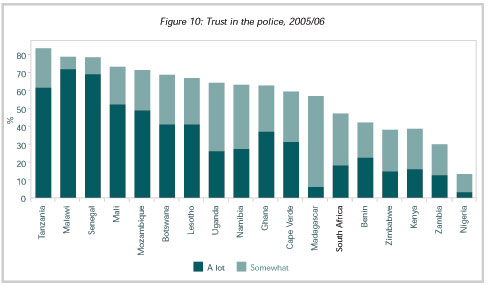
In addition, Nigeria’s unemployment situation only makes the situation much worse. Relatively highly educated young people participate in intelligent crimes such as internet fraud to earn a living. This crop of educated but unemployed youth presents a huge potential for Nigeria in as much as it is a risks. Nigeria therefore has one of the most volatile social situations in Africa, which ironically also places it as a country with serious opportunities for economic take off.
Technological Environment
Ali-Akpajiak and Pyke, (2003) refer to Nigerian technlogical sector as antiquated and expensive to maintain. A lot the Technologies used in the Nigerian mineral industry comes from abroad (Ogbu et al., 1995). The significant bits of research conducted in the country’s universities seem biased towards medicine. In other technoilogical fields, research is mainly on internationally recognized problems approached from a basic research standpoint. Ogbu et al., (1995) identify the major reasons for this situation being that most of the people involved in Research do it to attain promotions and generally have less than ten years teaching experience. Professors and other senior academicians have huge teaching loads that do not allow for sufficient time to conduct significant research. This coupled with lack of funding, limited collboration opportunities and inadequte equipment makes it difficult for the country to make any headway into developing its technological sector (African Development Bank, 2006). The import of spare parts and raw material remains one of the major drain on Nigeria’s foreign exchange earnings (Dibie, 2003). For Nigeria to become technologically self reliant, Dibie (2003) proposes that it should try out an approprite technology model to develop a local technological base in order to develop its own technologies for use in exploiting its natural resources. In addition, this will enable it to develop a local manufacturing industry that will increase Nigeria’s capacity to manufacture and export petrochemical products (Yansane, 1996). The fact that Nigeria still does not have a petrochemical industry speaks volumes of its technological development (African Development Bank, 2006). Improvement in technology hold the key to better production efficiencies in the gas industry (US Energy Information Administration, 2010).
Nigeria has shown that it has the capacity to adjust to technological change when the improvement and uptake of internet technologies and mobile telephony comes into consideration. This means that even in other sectors, the country has the capacity to develop its technological outlay.
The Status of Natural Gas Exploitation
The existing Nigerian natural gas master plan development process has been through a number of stages as shown in figure below:
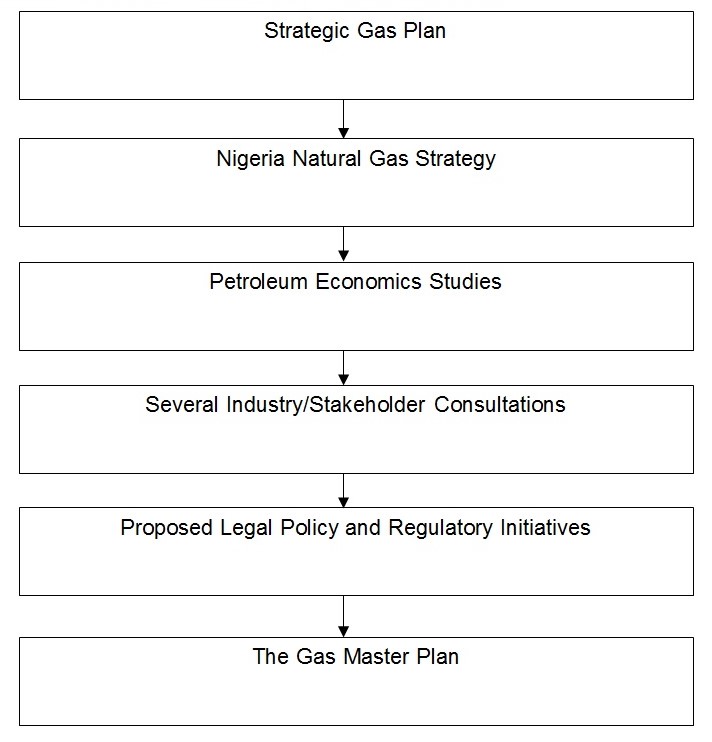
The oil and gas industry is under the jurisdiction of the National Nigerian Petroleum Corporation (NNPC) (Gilardoni, 2008). The role of the NNPC in the international gas market increased in significance with the discovery and exploitation of natural gas in the Niger Delta. The region accounts for over 95% of Nigeria’s earnings and is responsible for 40% of GDP (Derri & Abila, 2009). Nigeria’s natural gas resources may be of more value that its crude oil resources (Ebiz Guides, 2006). The natural gas reserves as at 2006 were at 5210 billion cubic meters (Gilardoni, 2008). Table 5 shows the steady increase in the gross amount on natural gas produced in Nigeria. More information on Nigeria’s statistics on natural gas production is in the appendix. Table 11 shows the net production, table 12 shows LNG exports, while table 13 shows the quantities of LNG Re-Injected.
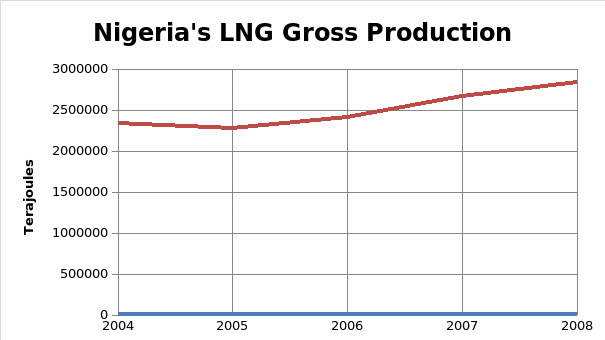
The two key bottlenecks bedeviling the exploitation of natural gas are that the gas is in associated form and that there is a severe shortage of infrastructure in Nigeria to allow for the maximization of the benefits of the gas’ potential (Gilardoni, 2008). The NNPC has identified four key elements to aid it in maximizing the benefits. They include strengthening partnerships with international players in the gas market, further development of the weak gas infrastructure, reduction of flaring, and mainstreaming of natural gas as a driver for development in the country (Gilardoni, 2008). In addition, there is need to streamline the legislative and regulatory framework governing the distribution of natural gas (Oxford Business Group, 2010). Nigeria flares about 75% of the gas it produces, which not only results in loss of the fuel, but leads to environmental pollution and health concerns leading to respiratory diseases (Williams, 2008). Two major projects aimed at extraction of natural gas stand out. The Escravos Gas Project of 1997 became the first project that allowed for gas exports (Williams, 2008). The value of the exports comes from the fact that Nigeria does not use much natural gas within its territory (Gilardoni, 2008). The second significant project is the National Liquefied Natural Gas Scheme (NLNGS) of 1999, which had the potential of processing 77 billion cubic meters of natural gas in a year (Williams, 2008). Table 7, in the appendix shows the specific projects involved analyzed by distance, diameter and length of pipeline, and the carrying capacity From these projects, there was a proposal to construct pipelines to take the gas to central and northern Nigeria, as well as Benin, Togo, and Ghana as shown in Figure 4.
In order to implement the natural gas master plan, there are a number of pipelines mooted to transport LNG across Nigeria and to international destinations. Within the country, five pipeline projects should ease NLG delivery. They include the trans-Nigeria pipeline that will run from warri to ramuekpe. Its design diameter is 16 inches. Secondly, there is the offshore gas gathering system designed to run 268 km from the Banga field to the Bonny Terminal. The third pipeline is the Escravas-Lagos Pipeline system that interconnects Escrava to Lagos on a route that is 340 km long on a 36-inch diameter pipeline. The last two pipelines are the Aladja system designed to cover 294 kilometers pipeline and the greater Ugheli system running from Ugheli to Warri.
Two international pipeline projects designed to expand the export market includes the Trans Saharan pipeline that will run from Nigeria to Algeria from Warri to Arzew. This Line will cover 4400 km linking Nigeria to Africa’s North African coast and thereby opening up European markets. The other pipeline, dubbed the West African Gas Pipeline will 1033 km run from Lagos to Takoradi to open up the regional market. Table 3 in the appendix shows a summary of the associated gas pipelines in the pipeline system.
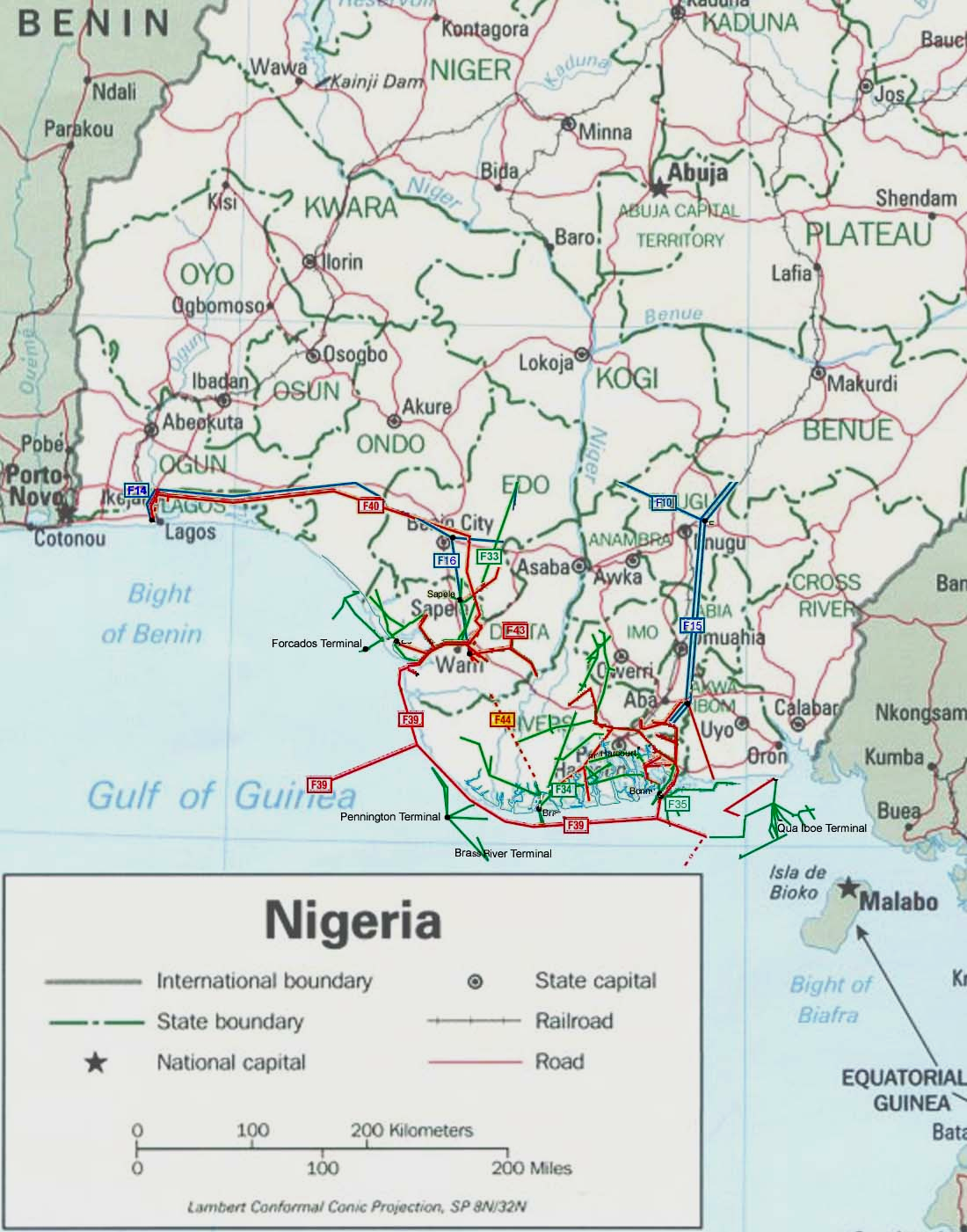
There was also an idea of constructing a 2500-mile long pipeline across the Sahara to the shores of Algeria conceived by the Nigerian and Algerian governments to ease gas export to European destinations (Ebiz Guides, 2006) as shown in figure 7.
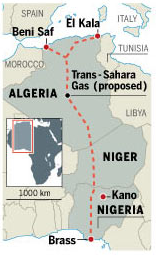
The Nigerian government, concerned about the huge losses from lost revenue due to flaring, developed a Gas Master Plan in 2009 to utilize the gas for power generation in new gas fired power plants to help reduce the power shortage in the country (Ibp USA, 2009). Projects that are under implementation now target three potential markets. There is the European and American market for the export of liquefied gases, and then there is the use of recovered associated gas in the local market, and construction of pipelines to export gas to neighboring countries (International Monetary Fund, 2003). While Nigeria produces significant amount of oil, most of it goes to export destinations as shown in Figure 8.
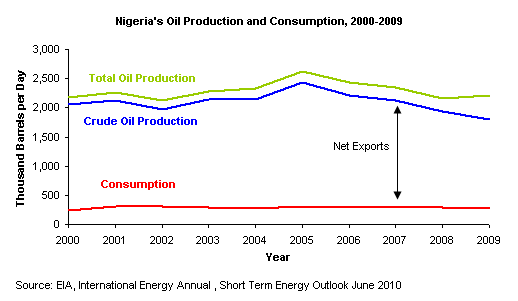
Estimates of the length of the gas pipeline
The strongest case for the utilization of natural gas in Nigeria is towards generation of power to alleviate the critical energy deficit in the country by using the gas to generate electricity in small-scale decentralized power generation plants. (Shaad & Wilson, 2009). The estimated demand for Nigeria is 10000 MW while the available capacity is 2597 MW, meaning that there is a production shortfall of 74% as illustrates in figure 7 below.
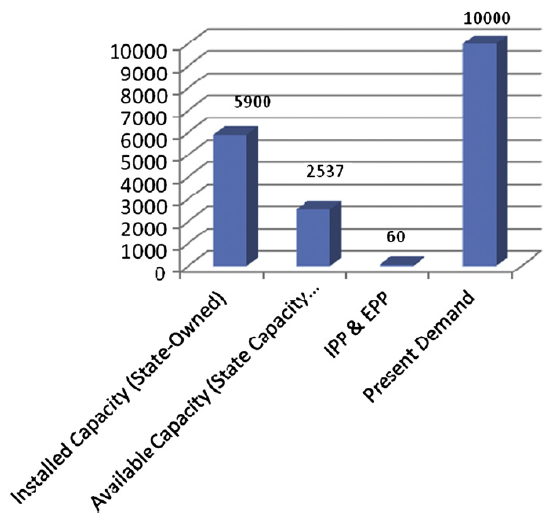
To illustrate this point, a comparison of Nigerian and Venezuelan economy shows just how mush Nigeria lags behind. The two countries have many comparable characteristics as shown in Table 2. Venezuela produces slightly more oil than Nigeria per day but Nigeria exports more oil than Nigeria. Nigeria’s electricity production in 2007 was only 21.92 Billion kWh compared to Venezuela’s production of 113 billion kWh. The difference comes from internal generation of electricity using crude resources.
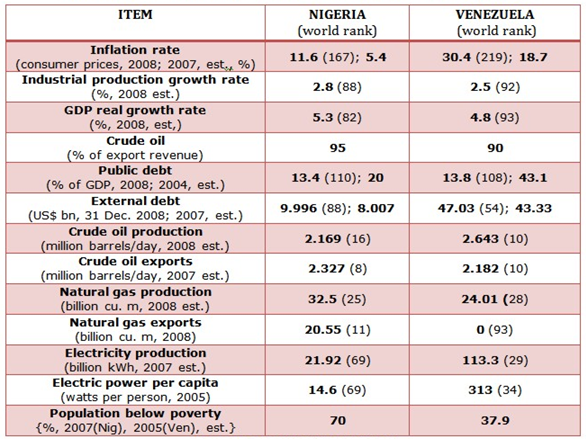
The cost of connecting rural communities to the national grid is way above what it will cost to construct the decentralized gas powered plants. The national grid is in bad shape and requiring much attention (AfDB & OECD, 2010). The independent plants will reduce the huge shortage of demand for electricity currently at 75%.(Oxford Business Group, 2010). They will help cut the cost of business because currently generators in use contribute a lot towards the high cost of business in Nigeria (Oxford Business Group, 2010). Shaad and Wilson (2009) identify the issues that limit the effective implementation of the gas master plan. They include lack of capital, corruption, uncoordinated energy planning between federal and state planning, limited consultation between stakeholders and political interference. Since Nigeria lacks a stable fiscal environment, it is extremely challenging to develop profitable ideas on how best to sell the natural gas it produces in the international market (AfDB & AU, 2009).
The Master Plan
Vision Statement
A Vision statement for the natural gas utilization master plan for Nigeria must include the following elements. It must be wide enough to encompass all the critical aspects of the long-term utilization plan of natural gas in Nigeria. In addition, it must be specific enough to address the issues to avoid ambiguity (Frid, 2000). Finally, it should capture the aspirations of the people of Nigeria and serve as a rallying cry for support for it. The proposed vision statement for a natural gas utilization master plan in Nigeria is, “To be a world-class provider of natural gas to meet national needs of Nigeria and to satisfy international clients”.
Objectives
The objectives of this master plan emanate from the key issues it seeks to address. Scoping is critical during the development of objectives. Many issues require addressing to ensure that the master plan is comprehensive. However, the need to have a defined scope is critical because addressing some of these issues do not fall within the realistic purview of the natural gas sector. Relevant objectives are those that the implementers have complete control over and can do something. The key objectives identified for the master plan are:
- To develop the required infrastructure both regionally and internationally to ease the supply of natural gas
- In conjunction with electricity generation companies, to develop gas fired plants to produce electricity for off grid areas in Nigeria
- To promote the use of natural gas domestically to expand the local market
Some of the factors critical to the success of the plan but beyond the realistic purview of the plan include the cultivation of a stable macroeconomic environment, promotion of social cohesion in Nigeria, and fighting graft.
Stakeholders
Ignoring stakeholders in the development and implementation of a master plan is to court disaster. The stakeholders in this master plan include the regional authorities in the areas that the reserves lay such as the Niger Delta, and those in whose territory, the infrastructure for natural gas distribution should lay. Other stakeholders are state ministries such as the Ministry of Energy, Ministry of Commerce and Industry, Ministry of Environment, Ministry of Finance and Ministry of Petroleum Resources. Other agencies include NNPC and LPNG. International stakeholders include OPEC. In the implementation of specific projects within the country, local stakeholders will vary and they will include the local communities and companies with interests that the projects will affect somewhat.
Short-Term and Long-Term Goals
The plan will need to distinguish between the long term and short term goals necessary to achieve the objectives set. Under each objective, there are many possible short term and long-term goals. They arise from the scope that the plan covers. Short-term goals include the development of a competent human resource pool, securing of funding to implement skeletal infrastructural works necessary to activate the supply chain, strategic planning, and marketing activities. Long-term goals include the outlay of pipelines, and the construction of port facilities, acquiring transport vessels, and storage facilities to handle the natural gas. An additional way to develop the goals is by looking at the three streams through which the natural gas should flow. Specific goals relating to the recovery, processing and delivery of associated gas is a likely way of handling the development of goals. In addition, separate short term and long-term goals for the development of a regional market catalyzed by construction of a West African pipeline, and the construction of delivery facilities for the European and American markets.
Evaluation of the Plan
After agreement on the best short term and long-term goals, implementation dates will form the basis for evaluation of the success of the master plan.
Discussion
Evaluation of Findings
The following issues stand from the findings made in this project.
The master plan development has received lesser attention compared to the process of developing other types of plans.
There is limited literature on the process of development of master plans. However, separate sectors apply the concept of master planning to plan for the development. The most common master plans relate to urban design, water resources planning and agriculture. On the other hand, there are many books on the development of other type of plans such as strategic plans. The possible explanation for this disparity is that there is limited application and need to develop master plans since they make sense to regional authorities, which already have many guiding documents such as policy papers and infrastructure development plans. Strategic plans on the other hand find a lot of usage in many different organizations. This means that there is a higher demand for information relating to the development of strategic plans as opposed to that required for the development of master plans.
The second reason is that the production of master plans normally comes from the need to meet requirements by funding agencies and does not seem to have an immediate value to the developers (Flink et al., 2001). Strategic plans on the other hand normally come from a recognized need for direction in a given sector.
There is a relationship between master plans and strategic plans. This relationship has to do with the fact that they all relate to the future aspirations. Their role is however different from each other, with a master plan providing detailed guidelines for the development of a particular sector, while a strategic plan deals with specific issues.
There is a pessimistic tone to Nigeria’s internal environment
Much of the literature reviewed seemed to have a very grim picture of the Nigerian environment. It is much easier to see the problems bedeviling Nigeria as opposed to the opportunities that the country has. While the challenges are real, the overemphasis on the challenges the country faces makes it appear as though the development of a master plan is a premature activity because of the internal issues in the country. One case in point is a prediction by the United States that Nigeria may collapse into a failed state within ten years because of increasing militancy in the Niger Delta (Derri & Abila, 2009).
Nigeria has a very challenging economic, political, social, and technological environment.
It is however very true that implementing a master plan in Nigeria will be a very challenging affair. Looking at the political environment, key challenges will come from the political realities of the federal system of government. Since the roles of the different levels of government already clash, a lot of negotiations and subsequently possible delays will be the result. Internal issues in the country make it difficult to assess future production levels (US Energy Information Administration, 2009).
At the social level, the country has a large educated population, which should be able to operate many aspects of the projects. However, the need for imported labor from experienced countries remains a cost effective option to increase the cycle time for the projects under the master plan. The challenge of corruption and insecurity will affect the plans negatively. With increasing levels of crime and abductions, workers in the gas sector will be the target of terror gangs who will seek to get ransom from them. This kind of insecurity in the Niger Delta led to dramatic losses in the closing years of the last decade (Maritz, 2010). In addition, gas and oil sold in the black market affected national revenues negatively (Muller et al., 2007).
Technologically, the best and quickest option will be for the country to import the technologies required for the development of the sector and take a longer-term approach at developing the internal capacity to develop homegrown technologies. One way is to invite international companies that provide the technologies to set up shop in Nigeria with local shareholding (Plummer & Heymans, 2002). This way the country will have the opportunity to develop local capacity in the manufacturing processes required for these technologies. The result will be that Nigeria will transfer some benefits to the international community, while it will also reap adequately from the global market (Waters, 2001). Otherwise, trying to build the infrastructure from scratch using local technologies will increase the start up costs and lead time, and will bring about inefficiency and safety concerns. Nonetheless, this is not a good excuse for failing to develop local capacity because it promises better long term returns to the country by way of cheaper production costs and the provision of much needed jobs.
There is international interest in Nigeria’s natural gas reserves because of foreign strategic reasons.
Another theme that emanates from the literature reviewed is that there is a lot of international interest in Nigeria primarily for its energy resources, which foreign countries consider to be within their strategic focus (Daughtry & Casselman, 2009). This seems to have trickled from the colonial era. Western powers developed the oil sector in Nigeria to meet their needs back at home. Shell and Agip remain key stakeholders in the Nigerian Oil market. Figure 10 shows the spread of the players on the natural gas industry in Nigeria. Countries such as the United States maintain close ties with the country for its oil supply even when questions relating to human rights abuses and environmental pollution arise. The foreign countries seem to care less when ecological disasters strike in Nigeria in scales that would cause widespread uproar back home.
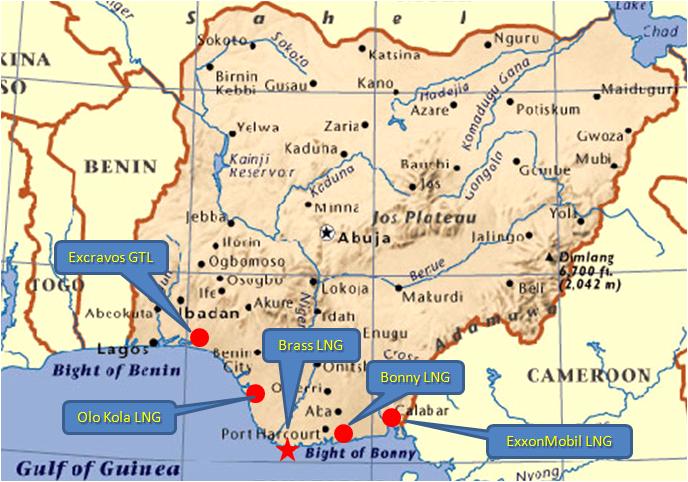
In some instances, foreign countries such as the United States have sent military aid to Nigeria to quell militia activities in the Niger Delta such as in 2005 to secure petroleum production (Derri & Abila, 2009). The US considers Nigeria as a strategic trading partner because it supplies the US with 10% of its oil imports (Ploch, 2010). Currently, there are ongoing negotiations with foreign companies such as Russian Gazprom to develop the natural gas business in Nigeria. Gazprom aims at becoming the leading developer of natural gas in the world (US Energy Information Administration, 2009). In a related development, India and China competed in 2006 to buy a stake in the Nigerian Oil fields (Jeffries, 2006). While these relationships provide the country with an opportunity to develop its resources quickly, they reduce the returns the country gets from its own resources. In fact, since the international players bring in their own staff and machinery, the country experiences a double loss because it not only shares the profits, but also losses jobs and the knock-off benefits of the enterprise. In the natural gas sector, NNPC does not hold a majority stake in the oil and natural gas interest it participates. As Nigeria’s national holding company in this sector, its position in hardly influential enough to ensure that the natural gas agenda meets Nigeria’s needs first. This consideration of foreign interests before the local needs is the bane for the conflicts seen in the Niger Delta.
The master plan required needs to take into account the local needs in as much as it should have external markets in mind.
One key issue that emerges is that the master plan developed for the Nigerian natural gas sector needs to take into account the needs of the Nigerian people in as much as it seeks to market the product to other countries. From a business standpoint, the country needs to consider its resource deployment and internal needs before it makes a marketing plan so at to ensure it meets the needs of its key stakeholders – the people of Nigeria (Mark, 2004). One serious need in the country is electricity. With the huge natural gas reserves in the country, there should be projects to develop small-scale off grid power plans especially in the North of Nigeria, which has poor infrastructure. In addition, the issues relating to the Niger Delta show that the Nigerian government emphasizes the needs of the investors more than it does the needs of its own people. Why is it then than the Niger Delta, home to ninety percent of Nigeria’s oil wealth, is still languishing in abject poverty that is lower than the national average? This situation is the perfect recipe for civilian strife and is not ideal for international trade. Nigeria is a strategic holder of resources that the world needs and hence it need to do everything in its power to meet the needs of its own people in order to insure international supplies. Otherwise, loss of Nigeria’s input in the world energy mix may result in instability and international resource based conflicts in other countries.
Nigeria seems to ignore the need to develop local infrastructure to maximize the benefits from its resources thereby lacking the consistent bearing that all marketers must have (Wall, 2004). This shows pretty well in the oil sector where the country exports crude and imports the more expensive refined products. It needs to get a new strategy in order to do the right things (Harvard Business School, 2005). If Nigeria builds oil refineries, it would get more benefits from its crude, and it will be able to meet the energy need of its people. This kind of strategy development through a formal and consistent effort will allow the country to enjoy its resources in the long term (Henderson, 1991).
Nigeria’s Dependence Too Much on Oil and Natural Gas
Oil accounts for almost fifty percent of Nigeria gross domestic product while it is the source of over eighty fiver percent of foreign exchange earnings. This dependence on oil makes Nigeria very vulnerable to fluctuations in the international prices of oil. It also exposes the country to risks associated with prices of international currencies especially the dollar. This dependence becomes worse by non-investment in local infrastructure to refine the oil locally. It is paradoxical to hear that Nigeria suffers from fuel shortages because it has no oil refinery plant capable of meeting the local needs of the country. This model of exporting raw materials to re-import finished products remains a key challenge to development in Africa, where people are inclined to think about the only as producers of raw materials and not the developers of value added products. This dependence is the cause of resource-based conflicts because many people do not see the need to invest in the future. Nigeria has seen a lot of instability and homegrown terrorism because of the resource based conflict such as in the Niger Delta. Despite the huge natural gas and crude oil wealth, the country has not enjoyed the prosperity commensurate to the advantages brought about by an oil economy.
Conclusions
Aims and Objectives Met
The first objective of the paper was to identify the critical element of a master plan applicable to the natural gas sector in Nigeria. Since it was difficult to find substantial literature on the development of master plans in the energy sector, the approach used to meet this objective was a review of the issues considered when developing master plans in the water and urban planning sectors. The key issues identified included the development of a comprehensive vision, the identification of key objectives, the setting up of realistic short term and long-term goals, and the involvement of stakeholders in the process. These are parts of the required master plan.
The second objective was the undertaking of a PEST-Analysis for Nigeria to determine the Political, Economic, Social, and Technological situation in the country. There was a sufficiency of literature in this regard because of the high number of development related studies for the country. Organizations such the World Bank, the African development bank, the African Union and local researchers have done numerous studies and analysis of the country’s situation. This is because of the significance of Nigeria as the most populous country in Africa, and its second largest economy.
The third objective related to the determination of the status of development of the natural gas subsector in the country to inform the development of a natural gas utilization master plan. The key issues here were that the sector has developed to some degree under the NNCP. There are plans to expand it to tap into the West African markets and the European and American markets whose demand for natural gas is substantial.
The final objective was the development of a natural gas utilization master plan for the country. The plan developed includes the key issue that ought to go into the master plan such as a vision, objectives, goals, scope, and stakeholders. In a straightforward master plan, the themes will resonate well with the developers of the plan. The ideas here lend themselves to rearrangement to form the required plan in order to meet the needs of the Nigerian oil industry.
Contribution to the Field
The key contribution of this paper to the field is that it has identified the key issues that will affect the development of a master plan for Nigerian Gas. By taking a contextual look at the Nigerian society and its socio-economic, political, and technological drivers, the paper presents the issues that shape the Nigerian petroleum economy and explores a strategy for meeting the challenges. Through the paper, it is now clear that the work of developing an implementable master plan for the gas sector will require input from the key industry stakeholders and in addition, it will call for their commitment to the plan.
How the contribution will make a difference?
Through this paper, the foundation for the development of a comprehensive natural gas utilization master plan for Nigeria is in place. The issues it contains present the aspects for consideration and a framework for the development of a master plan. By indentifying the necessary components and the issues that a master plan must address, the development of a master plan, this work serves as a reference and holds strategic value in its elements as a master plan.
Future Work
In the area of energy planning, there is a clear gap in terms of theoretical development of the ideal process applicable for the development of a master plan in the energy sector. The challenge for the development of a systematic process for the development of energy master plans lies unmet. This gap frustrated the efforts put in place to produce this paper. There is need to commit research efforts into identifying the crucial elements of an energy master plan. Such an effort includes an appreciation of the elements identified in this project as necessary constituents of a master plan and hence this work may serve as a guiding light in the process of development of a natural gas master plan
Reference List
AfDB & AU, 2009. Oil and Gas in Africa. Oxford: Oxford University Press.
AfDB & OECD, 2010. African Economic Outlook. OECD Publishing.
African Development Bank, 2006. African Developement Report. Oxford: Oxford University Press.
Alder, M., 2010. Technip: Securities and Exchange Commission Litigation Complaint. United States District Court, Southern District of Texas, Houston Division: Diane Publishing.
Ali-Akpajiak, S.C.A. & Pyke, T., 2003. Measuring Poverty in Nigeria. Oxford: Oxfam.
Ariweriokuma, S., 2008. The Political Economy of Oil and Gas inAfrica: The Case of Nigeria. Illustrated ed. New york: Routledge.
Bensoussan, B.E. & Fleisher, C.S., 2008. Analysis without Paralysis: 10 Tools to Make Better Strategic Decisions. Upper Saddle River, NJ: Pearson Education, Inc.
CIA, 2011. Nigeria. Web.
Clickafrique, 2010. Africa’s Ten Largest Economies in 2007. Web.
Dalic, T., 2007. Globalisation of Marketing Strategies in Light of Segmentation and Cultural Diversity. Norderstedt: GRIN Verlag.
Daughtry, T.C. & Casselman, G.L., 2009. Executing Strategy: From Boardroom to Frontline. Herndon, VI: Capital Books.
Derri, D.K. & Abila, S.E., 2009. Sustainable Developement Issues in the Niger Delta. In F. Emiri & G. Deinduomo, eds. Law and Petroleum Industry in Nigeria. Oxford: African Books Collective. pp.213-20.
Dibie, R.A., 2003. Public Management and Sustainable Development in Nigeria: Military_Bureaucracy Relationship. Hampshire: Ashgate Publishing Ltd..
DOE, 1999. Environmental Benefits of Advanced Oil and Gas Exploration in Production Technologies. Washington CD: Department of Energy Department of Energy.
Ebiz Guides, 2006. Nigeria. Wellington Quay: MTH Multimedia S.L.
EIA, 2007. Tree Hugger. Web.
Ekwekwe, P., 2011. Nigeria: Leadership and Developement. Keynes: AuthorHouse.
Emiri, F. & Deinduomo, G., 2009. Law and Petroleum Industry in Nigeria. Oxford: African Books Collective.
Flink, C.A., Olka, K. & Searns, R.M., 2001. Trails for the Twenty-First Century: Planning Design and Management Manual for Multi-Use Trails. Washington DC: Island Press.
Frid, R.J., 2000. Infrastructure for Knowledge Management. Lincoln NE: iUniverse.
Geopolitics, 2010. Nigeria Pipelines. Web.
Gijsbers, G., Janssen, W. & Odame, H.H., 2001. Planning Agricultural Research. New York NY: CABI Publishing.
Gilardoni, A., 2008. The World market for Natural Gas: Implicatgions for Europe. Berlin: Springer.
Graham, I., 2004. Nigeria. North Minkato, MN: Smart Apple Media.
Grant, R.M., 2005. Contemporary Strategy Analysis. 5th ed. Malden MA: Wiley-Blackwell.
Gregory, A., 2000. Planning and Managing Public Relations Campaigns. 2nd ed. London: Kogan Page Publishers.
Harvard Business School, 2005. Strategy: Create and Implement the Best Strategy for Your Business. Boston, MA: Harvard Business Press.
Henderson, B.D., 1991. Developing Strategy. In C.A. Montgomery & M.E. Porter, eds. Strategy: Seeking and Securing Competitive Advantage. Boston, MA: Harvard Business School Publishing Division.
Henry, A., 2008. Understanding Strategic Management. Oxford: Oxfor University Press.
Ibp USA, 2009. Doing Business and Investing in Nigeria Guide. Washington DC: International Business Publications.
Institute for Defence Studies and Analyses, 2009. Africa and Energy Security: Global Issues, Local Responses. New Delhi: Academic Foundation.
International Monetary Fund, 2003. Nigeria: Selected Issues and Statistical Appendix. Washinton DC: International Monetary Fund.
Itsueli, P.O., 2009. Environmental Pollution in Nigeria: An Appraisal of Corporate Social Responsibility for Victims of Oil Pullution in Nigeria. In F. Emiri & G. Dienduomo, eds. Law and Petroleum Industry in Nigeria. Oxford: African Books Collective. pp.107-14.
Jeffries, I., 2006. China: A Guide to Economic and Political Developements. New York NY: Routledge, Taylor and Francis Group.
Jones, P. & Evans, J., 2008. Urban Regeneration in the UK. London: Sage Publications.
Lang, J., 1994. Urban Design. New York NY: John Wiley and Sons.
Low, P.S., 2005. Climate Change and Africa. Illustrated ed. New York: Cambridge University Press.
Maritz, J., 2010. Nigeria Like it is: A Practical Guide to Doing Business in Nigeria. Maritz Publishing.
Mark, D., 2004. Strategy: A Step by Step Approach to the Developement and Presentation of World Class Business Strategy. New York, NY: Palgrave Macmillan.
Mattes, R., 2006. How does SA compare? Experiences of Crime and Policing in an African Context. Web.
Mba, H.C., 2004. Management of Environmental Problems and hazards in Nigeria. Burlington, VA: Ashgate Publishing.
McBurney, D.H. & White, T.L., 2009. Research Methods. Belmont CA: Wadsworth Cengage Learning.
Moran, D., 2011. Climate Change and National Security: A Country-Level Analysis. Washington DC: Georgetown University Press.
Muller, J., Reder, M. & Network, S.-E.J., 2007. Africa and Europe: Co-operation in a Globalized World: Conference of Scribani-European Jesuit Network. Berlin: LIT Verlag Munster.
Mwalimu, C., 2005. The Nigerian Legal System. New York: Peter Lang Publishing.
Natural Gas Supply Association, 2010. Natural Gas and Technology. Web.
Nigeria, 2010. Ingpeadia. Web.
Obaje, N.G., 2009. Geology and Mineral Resources in Nigeria. Ilustrated ed. New York: Springer.
Odumugbo, C.A., 2010. Natural Gas Utilization in Nigeria. Journal of Natural gas science and Engineering, 2, pp.310-16.
Ogbu, M.O., Oyelaran-Oyeyinka, O., Ogbu, O.M. & Mlawa, H.M., 1995. Technological Policy and Practice in Africa. Ottawa: International Development Research Center.
Ojo, B.A., 1998. Nigeria’s Third Republic: The Problems and Prospects of Political Transition to Civil Rule. Commack NY: Sage Publishers.
Ola, R.F., 1984. Local Administration in Nigeria. Boston MA: Rouledge.
Onyeukwu, H., 2009. Nigerian gas Master plan and Policy: Is it a Contrained Energy Policy? From the Selected Works of Humprey Onyeukwu. Lagos: Selected works Bepress.
Oxford Business Group. The Report: Nigeria 2010. Lagos: Oxford Business group.
Packer, S. & Aggio, C., 2010. Achieving the Goals-2009: The Performance of Commonwealth Countries in Achieving the Millenium Development Goals in Education and the Dakar Education for All Goals. Publication. London: Commonwealth Secretariat Commonwealth Secretariat.
Ploch, L., 2010. Nigeria. Report on a Key Strategic Partner of the US Government. Congressional Research Service.
Plummer, J. & Heymans, C., 2002. Focussing Partnerships: A Sourcebook for Municipal Capacity Building in Public-Private Partnerships. London: Earthscan Publications.
Shaad, B. & Wilson, E., 2009. Access to Sustainable Energy: What Role for International Oil and Gas Companies? London: IIED.
Theodora, 2011. Nigeria Oil and Gas Pipeline Map. Web.
Umukoro, B.E., 2009. Gas Flaring, Environmental Corporate Responsibility and the Right to a Healthy Environment:The Case of the Niger Delta. In F. Emiri & G. Deinduomo, eds. Law and Petroleum Industry in Nigeria: Current Challenges. Lagos: African Books Collective. pp.49-64.
UN Habitat, 2010. State of the Urban Youth, 2010/2011: Levelling the Playing Field: Inequality of Youth Opportunity. Nairobi: United Nations Human Settlemets Programme (UN-Habitat).
UNdata, 2011. Statistics: Natural Gas (including LNG). Web.
US Energy Information Administration. International Energy Outlook 2009. Washington DC: Government Printing Office.
US Energy Information Administration. Annual Energy Outlook 2010, With Projections to 2035. Washington DC: Government Printing Office.
Walesh, S.G., 1989. Urban Surface Water Management. Washington DC: Wiley-IEEE.
Wall, S.J., 2004. On the Fly: Executing Strategy in a Changing World. Hoboken, NJ: John Wiley and Sons.
Waters, M., 2001. Globalization. New York, NY: Routledge.
Williams, L., 2008. Nigeria: The Bradt Travel Guide. Guilford, CT: Bradt Travel guides.
Williams, T. & Green, A., 1997. The Business Approach to Training. Hampshire: Gower Publishing, Ltd.
Yansane, A.Y., 1996. Prospects for Recovery and Sustainable Developement in Africa. Westport CT: Greenwood publishing.
Appendix
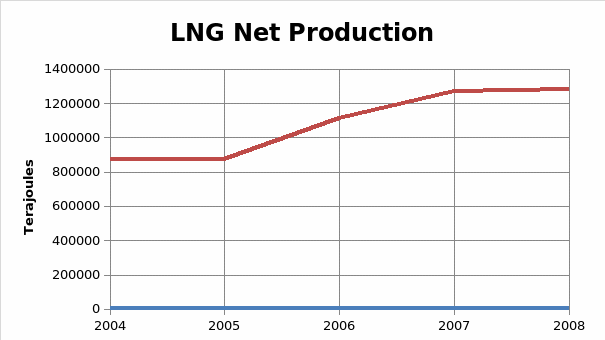
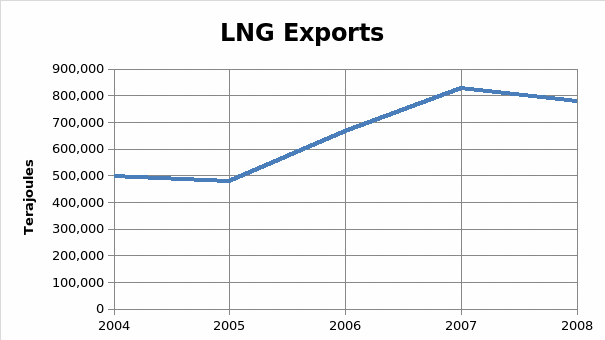
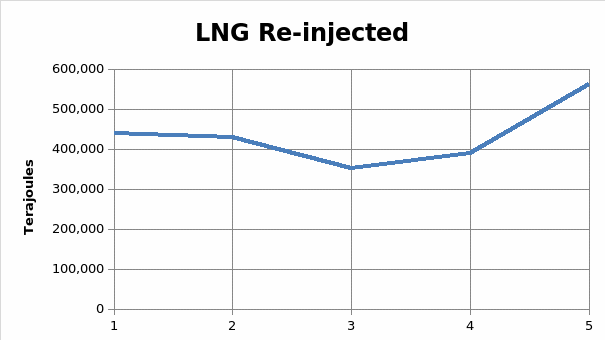
Table 3: Table showing Relative Distances of the Required Pipelines